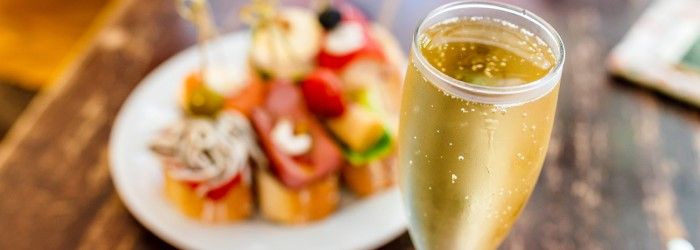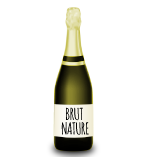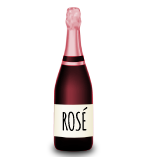When and how to drink cava
Cava is still very much associated with toasts and celebrations, although it is a very versatile and diverse wine. In Catalonia, for example, it has traditionally been served throughout the year to accompany a whole meal during the festive season. So how and when is it best to drink it?

Cava, for the aperitif and endless pairings
Cava is tremendously versatile at the table and a wine to drink at any time of the day. The carbon dioxide from the bubbles enhances the flavours of each dish and the balanced acidity and texture of the wine refresh the palate and predispose it to enjoy the next mouthful. Cava is a wine that creates harmony between the different flavours, it can accompany a complete menu, both on a daily basis and on the most special occasions. Their gastronomic combinations are practically infinite in both whites and rosés, and even more so when it comes to dry, brut nature and brut cavas.
The lighter ones are ideal for aperitifs. While those with more body can accompany a whole meal, with dishes from both traditional cuisine and any gastronomic culture. And for desserts, sweet cavas.
Brut Nature Cava
 Brut nature cavas are extremely sober and the most gastronomic, capable of combining with any dish, meat and fish, especially the most fatty, strong or spicy, such as lamb, salmon, roast meats and barbecues, and also with Iberian ham. If you want to add extra ageing aromas to your glass, go for the gran reserva versions, those with smaller bubbles but greater complexity.
Brut nature cavas are extremely sober and the most gastronomic, capable of combining with any dish, meat and fish, especially the most fatty, strong or spicy, such as lamb, salmon, roast meats and barbecues, and also with Iberian ham. If you want to add extra ageing aromas to your glass, go for the gran reserva versions, those with smaller bubbles but greater complexity.
Brut Cava
 For aperitifs and salads with fruit and balsamic vinegars, cava brut is the most suitable: oysters and seafood, cheeses, croquettes and canapés, and also for rice dishes and paellas, fideuàs, white and delicate red meats.
For aperitifs and salads with fruit and balsamic vinegars, cava brut is the most suitable: oysters and seafood, cheeses, croquettes and canapés, and also for rice dishes and paellas, fideuàs, white and delicate red meats.
Rosé Cava
 Rosé Cava is even more versatile than white cava, with almost infinite gastronomic possibilities. The lighter ones are an excellent choice for the aperitif, while the more full-bodied ones are the best accompaniment for sea and mountain dishes, mixed rice dishes, paellas and seafood
Rosé Cava is even more versatile than white cava, with almost infinite gastronomic possibilities. The lighter ones are an excellent choice for the aperitif, while the more full-bodied ones are the best accompaniment for sea and mountain dishes, mixed rice dishes, paellas and seafood
Sweet and semi-dry Cava
 One of the most common mistakes is to drink a dry cava (brut or brut nature) with very sweet desserts. When accompanying them, it is better to go for a sweet or semi-dry cava.
One of the most common mistakes is to drink a dry cava (brut or brut nature) with very sweet desserts. When accompanying them, it is better to go for a sweet or semi-dry cava.
£10
Special offer available for a minimum purchase of £99. Discount voucher valid for four weeks from issue date. Cannot be used in conjunction with other promotions except for the free delivery special offer.
Flute or tulip glass?
Cavas, like champagnes, are usually served in flute glasses, elongated, in order to enjoy the perlage of the bubbles. The straight-walled flute glass enhances the sensation of acidity and freshness and is recommended for younger cavas.
For long-aged and more complex cavas, a tulip-shaped glass is recommended. Its flared body retains the gas for less time, but its narrow mouth also prevents it from escaping too quickly. The important thing is the domed shape, to reduce the sparkling sensation and enhance the aromatic expression of the wine.
How should a bottle of cava be uncorked?
Cava bottles should be opened discreetly. First, remove the capsule and loosen the cap (or remove it, according to preference). Then, tilt the bottle at a 45º angle, holding the cork with your thumb to prevent it from coming out sooner than expected.
Rotate the bottle at the base, following the cork until it gives way effortlessly. Once the bottle has been opened, keep it slightly tilted for a few moments so that the pressure inside stabilises and the foam does not escape.
At what temperature should cava be served?
Cava should be served chilled, but not frozen! The usual temperature is between 5º and 8º C for the youngest ones and between 8º and 10º C for those aged for longer. To achieve this temperature, the ideal is to put the bottle in the fridge the day before, so that it cools slowly and evenly, and then keep it in an ice bucket with water, ice and a little salt during serving.
Always serve it slowly, tilting the glass so that the wine can slide slowly down the sides of the glass. And in two stages: pour a little wine first and wait a few seconds for the foam to settle, and finish pouring the glass until it is about two-thirds full. It is not advisable to fill the glasses too much in order to be able to pour more often and to keep the wine at the ideal temperature at all times.
What does the disgorging date indicate?
The disgorging date is the date on which the ageing process of the sparkling wine is completed and the product is ready to be marketed. With this process, the yeasts that have accumulated in the neck of the bottle during the stirring process are expelled, and the part of liquid lost at the moment of expulsion is filled with a similar quantity of the exact wine or with a mixture known as expedition liqueur.
Depending on the sugar content of this liqueur, cava may be extra brut, brut, semi-dry or sweet; brut nature is only cava in its pure state, without added sugar. Some appellations require the back label to indicate the year of the vintage and the month and year of the disgorgement date.
How long can a bottle of cava be kept?
In general, it is recommended to consume a young sparkling wine within a year or a year and a half from the date of disgorgement. Those that have been aged for more than a year, as is the case of the reservas, can be kept for 2-3 years. Those aged for longer can be kept for 4, 5 or 6 years.
Por lo general, se recomienda consumir un espumoso joven dentro del año o año y medio a partir de la fecha de degüelle. Los que han sido criados durante más de un año, como es el caso de los reservas, podemos conservarlos durante 2-3 años. Los criados durante más tiempo, podemos guardarlos durante 4, 5 o 6 años.
And while we do not open it, how do we keep it?
Experts still disagree on whether it is better to store sparkling wines vertically or horizontally. If you are going to open the bottle soon, our recommendation is to keep it upright and preferably in the fridge; the rest, horizontally with the other wines.
What they do agree on, however, is that the most important thing is the temperature and humidity of the place where they are stored and, above all, that they should be constant.
The ideal temperature for storing a bottle of cava is around 14º C and humidity is 50% so that the cork can hydrate properly. It is also advisable to avoid contact between the bottle and light, noise or vibrations.
You May Be Also Interested in
- What is Cava?
- Cava Production Process
- Where is Cava From: Cava Wine Regions
- The Art of Cava Tasting
- Cava Cocktails and Mixology
- Choosing the Right Cava
- Cava Wine and Celebrations
- Best cava brands
- Best Brut Nature Wines





